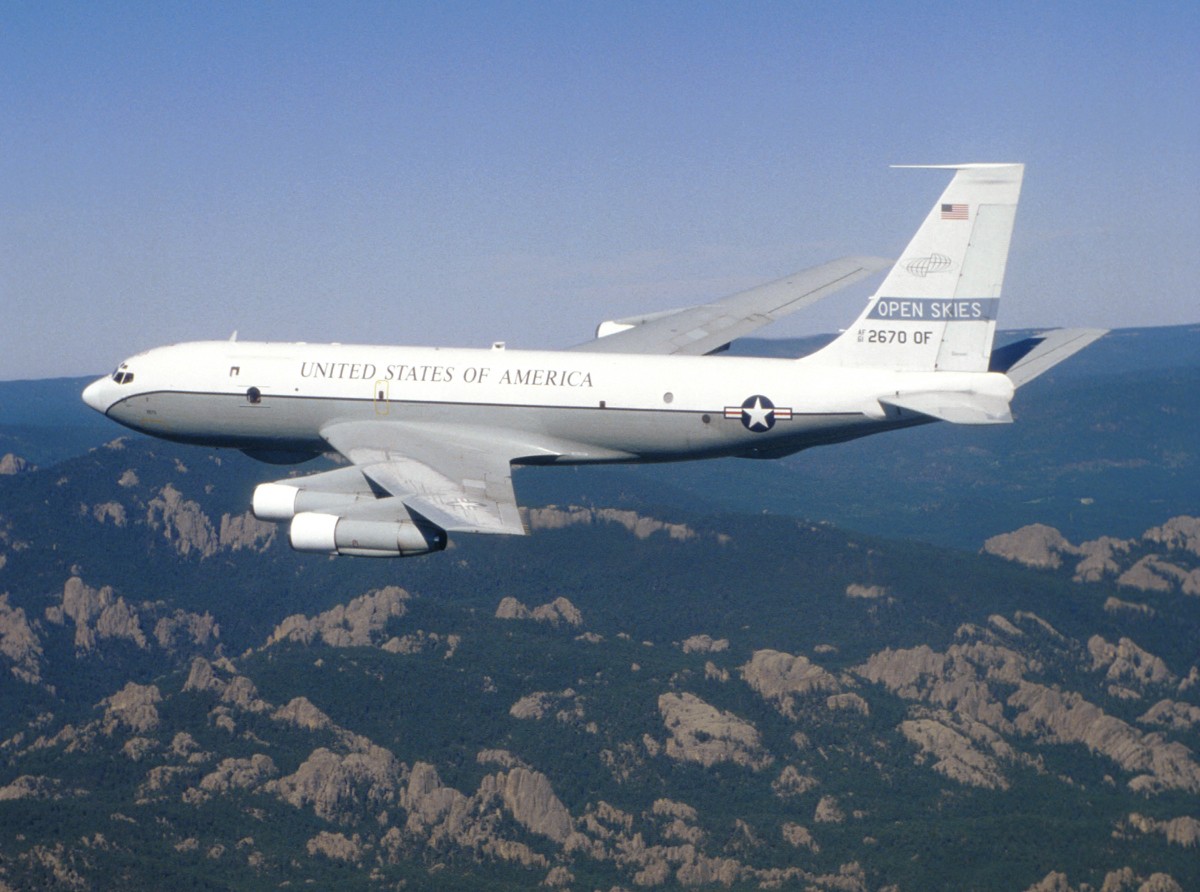 Courtesy: US Air Force
Courtesy: US Air Force
Cloudy Forecast for Open Skies and Arms Control
Late Wednesday, RIA reported a senior Russian Foreign Ministry official announced that “Russia has drawn up retaliatory measures in the case the United States leaves the Open Skies treaty.” The statement follows earlier reporting indicating President Trump signed a document signaling his intent to withdraw from the treaty. While this reporting suggests the Trump administration has formally notified members of the treaty of its intention to withdraw, which must be given six months in advance, there has been no public confirmation. Although it is unclear how far along President Trump is in the process of withdrawing, the statement by the Russian official underscores the consequences of withdrawal. Withdrawal would not only undermine U.S.-Russia relations, but also be detrimental to our national security, our relationships with our allies, and arms control agreements generally.
An “open skies” agreement was originally conceived by President Eisenhower and proposed in 1955. George H.W. Bush revived the idea, which was agreed upon in 1989 and implemented in 2002. Thirty-four countries joined the agreement, including the U.S., Russia, and Ukraine. The treaty allows member nations to conduct unarmed surveillance flights over other member nations after providing as little as seventy-two hours’ notice. The agreement also places technical limits on the type of imagery sensors used to ensure the kinds of information collected are equitable. Members can share the information gathered with other signatories. The treaty aims to build trust through “greater openness and transparency in [members’] military activities . . . by means of confidence- and security-building measures.”
Since the agreement went into force, nations have been using it as a valuable means of gathering information. Between 2002 and 2016 the U.S. logged 196 flight plans, while Russia logged 71. During that period, over 500 flights were conducted over Russia. In a letter to Senator Fischer, former Secretary of Defense Jim Mattis noted Open Skies was an important tool during the military crisis in Ukraine. After Russia shot at and seized three Ukrainian naval vessels in 2018, the U.S. used Open Skies to reaffirm its commitment to Ukraine and share intelligence.
The treaty, however, is not without its faults. Russian skies haven’t been as open as many would prefer. Russia has restricted access to Kaliningrad, Russian-occupied Georgia, and near a military exercise. Sen. Tom Cotton, a leading critic of the treaty, has said “Vladimir Putin has violated the Open Skies Treaty for years.” The U.S. has responded to these restrictions by imposing its own limitations on Russian flights. Critics also believe the money directed toward the program could be better spent, since the U.S. has spy satellites also capable of providing surveillance. For example, the FY2019 Defense Funding Bill appropriates $146 million to acquire a new Open Skies plane. Critics argue these factors mean Russia gets more out of the agreement than the U.S. Senators Cruz and Cotton have introduced a resolution calling for withdrawal from the treaty.
Just because the Open Skies Treaty falls short of perfection doesn’t mean it should be scrapped entirely. Many proponents of the treaty acknowledge its faults. In his letter to Senator Fischer, Mattis said the agreement was in “our Nation’s best interest” despite Russian violations. While the U.S. possesses spy satellites, not all our allies do. There is more at stake than just information Russia is capable from gleaning from the flights. American participation in Open Skies helps bolster its “reliability as a stable and predictable partner when it comes to European security.” If the U.S. withdraws, Russia is likely to follow. This will leave allies like the Baltic states and Ukraine blind. It would be a critical blow at a time when perceived American disinterest in its allies has led some to declare the “brain death” of NATO, an organization that helps protect American interests.
Plans to withdraw from Open Skies seem to be part of a larger and troubling trend. The Trump administration looks intent to preside over the dismantlement of arms control initiatives instead addressing issues in enforcement and implementation. In 2018, the U.S. withdrew from the Iran nuclear deal intended to restrain Iranian nuclear ambitions. Earlier this year, the U.S. suspended the Intermediate-Range Nuclear Forces Treaty (INF) in response to alleged Russia violations. Things aren’t looking good for New START either. Russia recently announced there isn’t enough time to engage in negotiations for an updated replacement of the arms control treaty that expires in 2021. Unfortunately, this means the U.S. has missed an opportunity to press for further reductions. Rather than letting New-START expire, the Trump administration should agree to an extension of the treaty. Instead of throwing the baby out with the proverbial bath water as it has with other agreements, the U.S. should engage in diplomacy to address issues.





